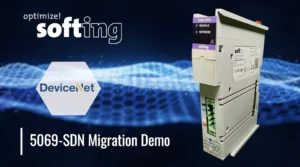Does the Cloud Need Agile Infrastructure to Thrive?
The way we communicate, share data and use technology to act on those insights is changing – and it’s all leading to the cloud.
On In the Cloud, every week new experts will engage in a fire side chat and will bring their extensive experience in software, IT and mobile solutions straight to you, offering a glimpse into the future of cloud connectivity around.
As companies race to achieve digital transformation, the structure to support innovation needs attention. To match pace with application development, companies must look to develop an agile infrastructure. But what does that mean? In the Cloud host Courtney Echerd spoke with guest Michael Norring, CEO and President of GCSIT, to answer the question. GCSIT is an engineering firm that partners with companies to foster agile infrastructures.
First, Norring explained the term. “Agile infrastructure means being nimble so that it can support applications. Infrastructure was once static and slow-moving, now it needs to be more fluid, so it doesn’t hold you back in digital transformation.”
“If you’re adopting new technologies, you don’t want the infrastructure to hold you back on your way to digital transformation.” – Michael Norring
One key to achieving this is starting on the development side. “These interactions matter, so we know how to change infrastructure quickly. It’s a holistic view of what an organization is trying to achieve, determining what agility they need to support innovation.” Norring said.
Norring noted that many organizations have traditional data centers for internally facing systems but use cloud-based ones for customer-facing applications. “There needs to be connectivity between internal and customer-facing. When there’s not, there can be failures. We help connect the dots to ensure they work seamlessly together, which includes the hybrid cloud.”
In working with businesses, Norring noted that they strive for long-term relationships. “I get to have conversations about innovation and work with smart individuals with great ideas, helping to move their vision forward.”
Stay Tuned For New Episodes
Follow us on social media for the latest updates in B2B!
Twitter – @MarketScale
Facebook – facebook.com/marketscale
LinkedIn – linkedin.com/company/marketscale








